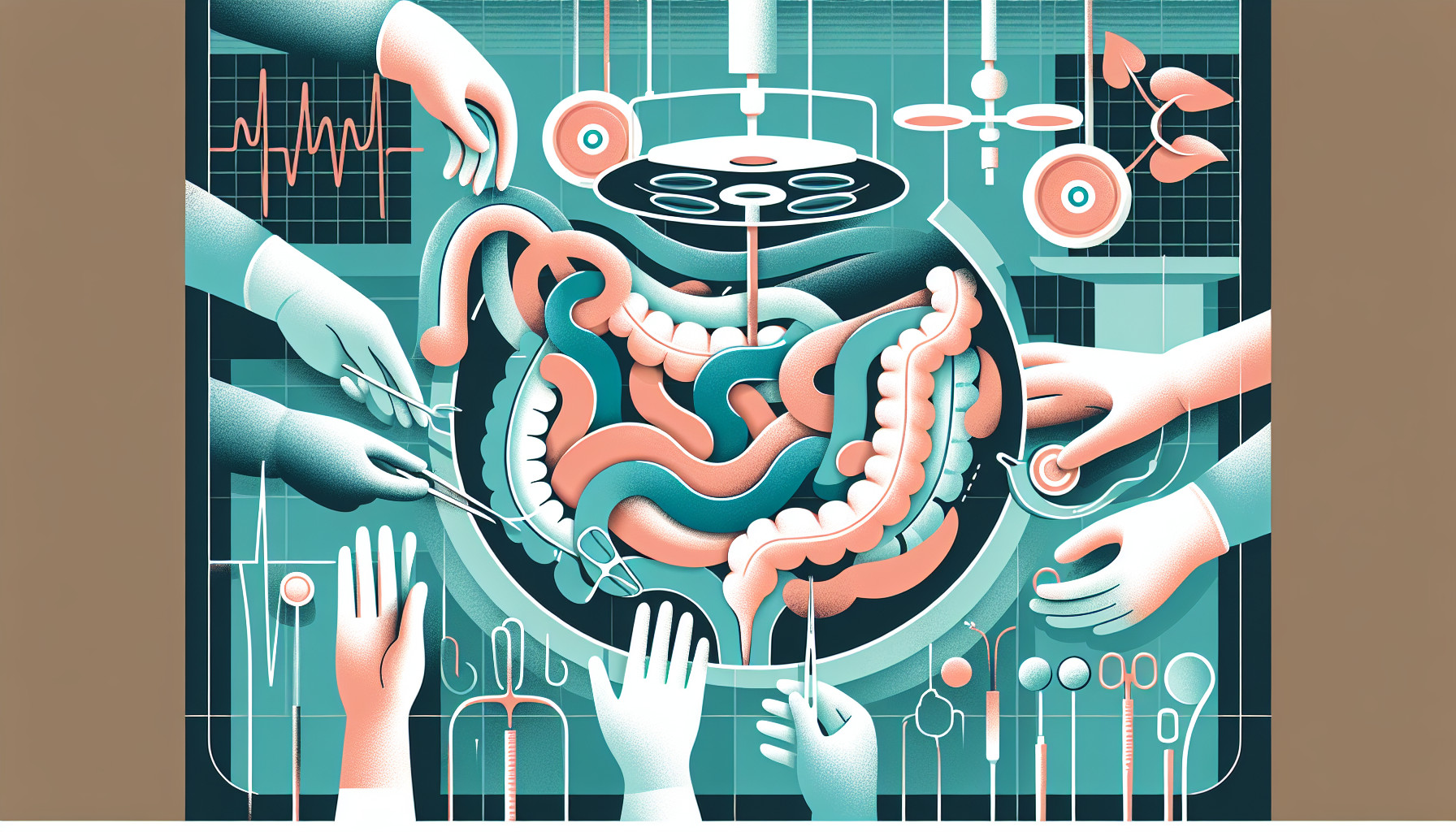Our Summary
This research paper is about a study that looked at the effects of placing protective tubes (ureteral stents) in the body during a type of surgery called laparoscopic colectomy. This surgery is done to remove parts of the colon and these tubes are sometimes placed to help prevent injury to the ureter, a tube that carries urine from the kidneys to the bladder.
The study found that out of 702 patients who had this surgery, 261 had these protective tubes placed. Interestingly, the only two injuries to the ureter happened in patients who had these tubes placed. The study also found that placing these tubes made the surgery take longer and increased the risk of new urinary problems.
Therefore, the study suggests that doctors should be more selective about when to use these protective tubes, since they don’t seem to prevent injury and may actually cause more problems.
FAQs
- What is the purpose of placing protective tubes during a laparoscopic colectomy?
- Did the study find that the protective tubes prevent injury to the ureter during laparoscopic colectomy?
- What were the negative effects of placing protective tubes during laparoscopic colectomy as found in the study?
Doctor’s Tip
A doctor might tell a patient undergoing laparoscopic colectomy that while protective tubes (ureteral stents) are sometimes used during the surgery to prevent injury to the ureter, they may not always be necessary and could potentially increase the risk of new urinary problems. It is important to discuss the benefits and risks of using these tubes with your doctor before the surgery.
Suitable For
Patients who may be recommended for laparoscopic colectomy include those with conditions such as colorectal cancer, diverticulitis, inflammatory bowel disease, or other conditions that require removal of part of the colon. Additionally, patients who are considered good candidates for laparoscopic surgery, meaning they are generally healthy and do not have significant comorbidities, may also be recommended for this procedure. Patients who have previously undergone abdominal surgery or have other factors that may make traditional open surgery more risky may also be good candidates for laparoscopic colectomy. Ultimately, the decision to recommend laparoscopic colectomy will depend on the individual patient’s specific condition and medical history, as well as the surgeon’s expertise and experience with this procedure.
Timeline
Before laparoscopic colectomy:
- Patient consults with surgeon to discuss the need for surgery and potential risks and benefits.
- Patient undergoes pre-operative testing and evaluation to ensure they are a suitable candidate for surgery.
- Patient may need to follow a specific diet or medication regimen in preparation for surgery.
- On the day of surgery, patient is admitted to the hospital and undergoes anesthesia before the procedure begins.
During laparoscopic colectomy:
- Surgeon makes small incisions in the abdomen and inserts a camera and surgical instruments to remove parts of the colon.
- In some cases, protective tubes (ureteral stents) may be placed to prevent injury to the ureter.
- Surgery typically takes several hours to complete.
After laparoscopic colectomy:
- Patient is monitored closely in the recovery room for any immediate post-operative complications.
- Patient may experience pain, discomfort, and fatigue in the days following surgery.
- Patient is gradually started on a liquid diet and then advanced to solid foods as tolerated.
- Patient may need to follow up with the surgeon for post-operative care and monitoring of any complications.
- Patient may need to undergo physical therapy or rehabilitation to regain strength and function.
- Patient may experience changes in bowel habits or digestion in the weeks and months following surgery.
What to Ask Your Doctor
Some questions a patient should ask their doctor about laparoscopic colectomy, specifically regarding the use of protective tubes (ureteral stents), may include:
- What is the purpose of placing protective tubes during laparoscopic colectomy?
- What are the potential benefits of using protective tubes during the surgery?
- What are the potential risks or complications associated with using protective tubes?
- How common is it to have protective tubes placed during this type of surgery?
- Are there alternative methods or techniques that can be used instead of placing protective tubes?
- How will the placement of protective tubes affect the length of the surgery and the overall recovery process?
- What are the chances of developing new urinary problems or complications if protective tubes are used?
- Based on my individual medical history and condition, do you recommend using protective tubes during my laparoscopic colectomy?
- What is the likelihood of injury to the ureter if protective tubes are not placed during the surgery?
- How will the decision to use or not use protective tubes impact the long-term outcomes of the surgery?
Reference
Authors: Luks VL, Merola J, Arnold BN, Ibarra C, Pei KY. Journal: J Surg Res. 2019 Feb;234:161-166. doi: 10.1016/j.jss.2018.09.041. Epub 2018 Oct 11. PMID: 30527469
